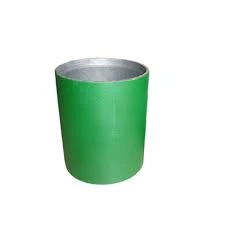- Afrikaans
- Albanian
- Amharic
- Arabic
- Armenian
- Azerbaijani
- Basque
- Belarusian
- Bengali
- Bosnian
- Bulgarian
- Catalan
- Cebuano
- Corsican
- Croatian
- Czech
- Danish
- Dutch
- English
- Esperanto
- Estonian
- Finnish
- French
- Frisian
- Galician
- Georgian
- German
- Greek
- Gujarati
- Haitian Creole
- hausa
- hawaiian
- Hebrew
- Hindi
- Miao
- Hungarian
- Icelandic
- igbo
- Indonesian
- irish
- Italian
- Japanese
- Javanese
- Kannada
- kazakh
- Khmer
- Rwandese
- Korean
- Kurdish
- Kyrgyz
- Lao
- Latin
- Latvian
- Lithuanian
- Luxembourgish
- Macedonian
- Malgashi
- Malay
- Malayalam
- Maltese
- Maori
- Marathi
- Mongolian
- Myanmar
- Nepali
- Norwegian
- Norwegian
- Occitan
- Pashto
- Persian
- Polish
- Portuguese
- Punjabi
- Romanian
- Russian
- Samoan
- Scottish Gaelic
- Serbian
- Sesotho
- Shona
- Sindhi
- Sinhala
- Slovak
- Slovenian
- Somali
- Spanish
- Sundanese
- Swahili
- Swedish
- Tagalog
- Tajik
- Tamil
- Tatar
- Telugu
- Thai
- Turkish
- Turkmen
- Ukrainian
- Urdu
- Uighur
- Uzbek
- Vietnamese
- Welsh
- Bantu
- Yiddish
- Yoruba
- Zulu
Exploring the Design and Functionality of Bull Plug Wellhead Systems in Modern Drilling Operations
Understanding Bull Plug Wellheads and Their Applications
In the realm of oil and gas drilling, the equipment used at the surface plays a critical role in the successful extraction of resources. One important component in this system is the bull plug wellhead, which serves as an essential interface between the wellbore and the surface facilities. Understanding the functionality, design, and applications of bull plug wellheads is crucial for professionals in the industry.
What is a Bull Plug Wellhead?
A bull plug wellhead is a type of sealing device that is primarily used to close off the wellbore temporarily during drilling, completion, or maintenance operations. It is designed to prevent the escape of fluids and gases from the well, ensuring safety and environmental protection. The bull plug itself is typically a heavy-duty plug that can withstand high pressures and harsh conditions often encountered during drilling activities.
Design and Components
The design of a bull plug wellhead incorporates several key components including the plug, the wellhead housing, and sealing mechanisms. The bull plug is engineered to fit securely within the wellhead housing and create a tight seal. This is crucial to prevent any blowouts or uncontrolled release of hydrocarbons. Advanced sealing materials are utilized in the construction of bull plugs to provide durability and resistance to chemicals and extreme temperatures.
Another important aspect of these wellheads is their ability to accommodate various sizes of casing and tubing, making them versatile for different drilling operations. Additionally, many bull plug wellheads are designed with features that allow for easy installation and removal, facilitating efficient operations in the field.
Applications of Bull Plug Wellheads
bull plug wellhead

Bull plug wellheads are utilized in a variety of scenarios within the oil and gas industry. One primary application is during the drilling phase, where they are used to seal the wellbore when drilling operations are interrupted or when transitioning between different phases of drilling. This ensures that the well remains secure and prevents any risk of blowout.
Another significant use is during well completion or workover operations. Once the well has been drilled, and production casing has been inserted, bull plug wellheads provide a reliable barrier that can be removed once the completion process commences. This timing is critical to managing pressure and maintaining safety in the wellbore.
Bull plug wellheads are also instrumental during maintenance activities. By providing secure sealing, they allow for the safe execution of repairs or modifications on surface equipment without the risk of pressure release or leaks.
Safety and Environmental Considerations
One of the paramount concerns in the oil and gas industry is safety—both for personnel and the environment. Bull plug wellheads are engineered with safety features that help to mitigate risks associated with high-pressure environments. Proper use and maintenance of these components are essential to maintaining the integrity of the well.
Furthermore, the ability to seal off wells effectively contributes to environmental protection efforts. Preventing the release of hydrocarbons not only ensures compliance with regulations but also helps to protect local ecosystems from potential contamination.
Conclusion
In conclusion, bull plug wellheads play a vital role in the oil and gas industry. Their design, functionality, and applications demonstrate their importance in enhancing safety and operational efficiency during drilling and maintenance activities. As technology continues to evolve, innovations surrounding wellhead designs will likely enhance their capabilities, ultimately supporting the industry in meeting the growing demands for energy resources while prioritizing safety and environmental stewardship.
-
Tubing Pup Joints: Essential Components for Oil and Gas OperationsNewsJul.10,2025
-
Pup Joints: Essential Components for Reliable Drilling OperationsNewsJul.10,2025
-
Pipe Couplings: Connecting Your World EfficientlyNewsJul.10,2025
-
Mastering Oilfield Operations with Quality Tubing and CasingNewsJul.10,2025
-
High-Quality Casing Couplings for Every NeedNewsJul.10,2025
-
Boost Your Drilling Efficiency with Premium Crossover Tools & Seating NipplesNewsJul.10,2025







